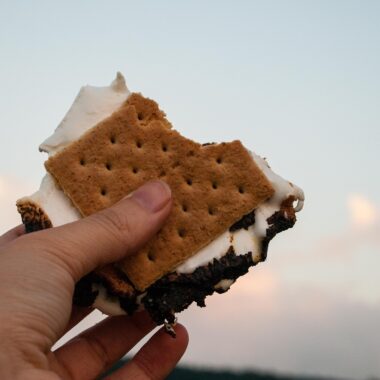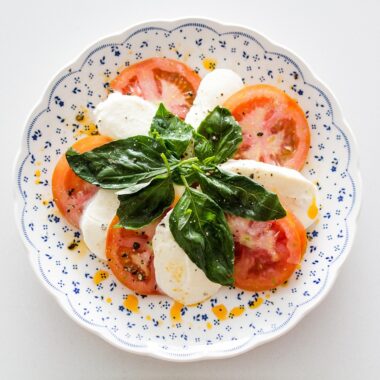Starting a food blog can be an exciting and rewarding journey, allowing you to share your culinary adventures with the world. Whether you’re passionate about recipes, food photography, or restaurant reviews, a food blog provides the perfect platform to express your creativity. Here’s a comprehensive step-by-step guide to help you launch a successful food blog.
Step 1: Define Your Niche
Before diving in, it’s essential to identify your blog’s niche. The food blogging world is vast, and carving out a specific focus will help you stand out. Here are some niche ideas:
Baking: Desserts, bread, pastries
Vegan/Vegetarian Cooking: Plant-based recipes
Cultural Cuisine: Authentic dishes from specific regions
Diet-Specific Recipes: Keto, paleo, gluten-free
Restaurant Reviews: Exploring local or global eateries
Food and Travel: Culinary adventures around the world
Budget Cooking: Affordable, delicious meals
Your niche should align with your passion and expertise. Think about what excites you most in the culinary world and what you can consistently deliver.
Step 2: Choose a Blog Name and Domain
Your blog name is your brand identity, so choose something memorable, relevant, and unique. Once you have a name in mind:
Check Domain Availability: Use tools like Namecheap or GoDaddy to ensure the domain is available.
Choose a .com Domain: It’s the most recognized and trusted extension.
Keep It Simple: Avoid complex words or lengthy names.
For example, if your blog focuses on desserts, names like “SweetToothAdventures” or “Baking Bliss” can resonate well with your audience.
Step 3: Set Up Web Hosting and Domain
Once you have a domain name, you’ll need web hosting to get your blog online. Popular hosting platforms include:
Bluehost: Beginner-friendly and affordable.
SiteGround: Excellent customer support and performance.
HostGator: Budget-friendly options.
After selecting a hosting provider, follow these steps:
Register Your Domain: Purchase your domain through the hosting service or a separate registrar.
Install WordPress: Most hosting platforms offer a one-click WordPress installation.
Connect Your Domain: Point your domain to your hosting account (your hosting provider will have instructions).
Step 4: Design Your Blog
Your blog’s design should be visually appealing and user-friendly. Here’s how to create an engaging layout:
Choose a WordPress Theme:
Free options: Astra, OceanWP
Premium options: Foodie Pro, Brunch Pro
Customize Your Theme: Use the WordPress Customizer to adjust colors, fonts, and layouts.
Add Essential Plugins:
Yoast SEO: Optimize content for search engines.
WP Recipe Maker: Create recipe cards.
Social Warfare: Add social sharing buttons.
Smush: Optimize images for faster loading.
Ensure your site is mobile-friendly since many readers will visit from smartphones.
Step 5: Develop Your Content Strategy
Content is the heart of your blog. Plan what type of content you’ll publish and how often. Here are some ideas:
Recipes:
Provide clear, step-by-step instructions.
Include high-quality images of the final dish and key steps.
Food Reviews:
Share honest opinions about restaurants, dishes, or products.
Include detailed descriptions and photos.
Cooking Tips:
Offer advice on techniques, tools, or ingredient substitutions.
Meal Plans:
Create weekly or monthly plans for specific diets or themes.
Maintain a consistent posting schedule—whether it’s weekly or bi-weekly—to keep readers engaged.
Step 6: Invest in Food Photography
Visuals play a crucial role in food blogging. Stunning images can attract more readers and increase engagement. Here’s how to level up your food photography:
Use Natural Light: Avoid harsh artificial lighting.
Invest in Equipment:
Camera: A DSLR or mirrorless camera (e.g., Canon EOS Rebel or Sony Alpha series).
Tripod: For steady shots.
Lenses: A 50mm lens is great for food photography.
Edit Photos: Use tools like Adobe Lightroom or Canva to enhance images.
Learn Composition: Experiment with angles, props, and plating to create appealing setups.
Step 7: Write Compelling Blog Posts
Writing engaging blog posts is key to connecting with your audience. Follow these tips:
Create an Engaging Introduction: Share a personal anecdote or a brief story about the recipe or dish.
Use Clear Headings: Break content into sections with descriptive headings.
Be Detailed: Provide precise measurements, cooking times, and instructions.
Add SEO Keywords: Include relevant keywords to improve search visibility (e.g., “homemade pasta recipe”).
Include a Call-to-Action: Encourage readers to try your recipe, leave a comment, or share the post.
Step 8: Promote Your Blog
Building an audience requires active promotion. Here’s how to spread the word:
Social Media:
Share posts on Instagram, Pinterest, Facebook, and Twitter.
Use relevant hashtags to reach a broader audience (#FoodBlogger, #HomeCooking).
Join Food Blogger Communities: Participate in forums, Facebook groups, or Reddit threads to connect with other bloggers and potential readers.
Collaborate: Partner with other bloggers or influencers for guest posts, recipe swaps, or giveaways.
Email Marketing: Build an email list and send newsletters featuring your latest posts.
Engage with Readers: Respond to comments and messages promptly to build a loyal following.
Step 9: Monetize Your Food Blog
Once your blog gains traction, you can explore monetization options. Here are some ideas:
Ad Revenue: Use platforms like Google AdSense or Mediavine to display ads.
Affiliate Marketing: Recommend products or services and earn a commission for every sale through your links (e.g., Amazon Associates).
Sponsored Content: Partner with brands for paid promotions.
Sell Products: Offer e-books, cooking classes, or merchandise.
Create a Membership Site: Provide exclusive recipes or content to subscribers for a monthly fee.
Step 10: Analyze and Improve
Track your blog’s performance to understand what works and what needs improvement. Use tools like:
Google Analytics: Monitor traffic, user behavior, and popular content.
Search Console: Check for SEO issues and keyword rankings.
Social Media Insights: Measure engagement metrics on platforms like Instagram and Pinterest.
Regularly review your strategy and make adjustments to optimize growth.
Final Thoughts
Starting a food blog requires time, dedication, and creativity, but the rewards are worth the effort. By following these steps, you can create a blog that reflects your passion for food and resonates with readers worldwide. Remember, success won’t happen overnight—stay consistent, keep learning, and enjoy the journey of sharing your culinary adventures with the world.


















